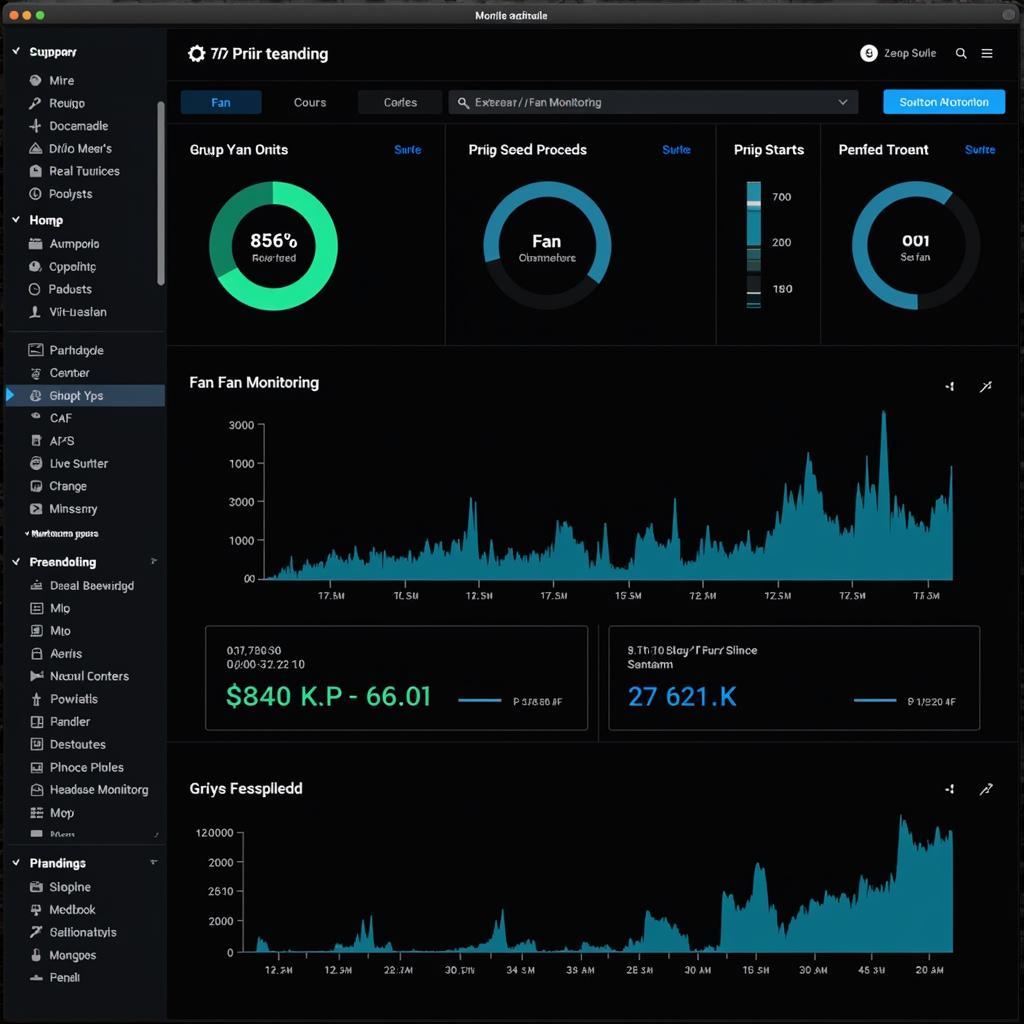Understanding the speed of your fans is crucial for maintaining optimal PC performance and preventing overheating. Whether you’re a gamer, a professional video editor, or just want to keep your system running smoothly, knowing how to check and adjust fan speed is essential. This comprehensive guide will walk you through everything you need to know about Check Speed Fan, from basic concepts to advanced techniques.
What Does Check Speed Fan Mean?
Before we dive into the specifics, let’s clarify what “check speed fan” actually means. In simple terms, it refers to the process of monitoring the rotational speed of your computer fans. This speed is typically measured in revolutions per minute (RPM). Checking your fan speed allows you to:
- Monitor Cooling Efficiency: Ensure your fans are spinning at the appropriate speed to dissipate heat effectively.
- Diagnose Potential Issues: Identify malfunctioning fans or inadequate cooling solutions.
- Optimize Performance: Adjust fan speeds for the best balance between cooling and noise levels.
How to Check Speed Fan: Essential Tools and Methods
There are several ways to check your fan speed, each with its own advantages and limitations. Let’s explore some of the most popular methods:
1. BIOS/UEFI
Your computer’s BIOS or UEFI (Unified Extensible Firmware Interface) is a low-level software that controls hardware at startup. Most modern BIOS/UEFI versions offer a hardware monitoring section where you can view vital system information, including fan speeds.
To access your BIOS/UEFI:
- Restart your computer.
- Repeatedly press the designated key during startup (usually Del, F2, F10, or Esc).
2. Software Utilities
Numerous third-party software utilities provide comprehensive hardware monitoring capabilities, including detailed fan speed readings. These tools often offer customizable dashboards, alerts, and logging features.
Popular software utilities for checking fan speed:
- HWMonitor: A lightweight and user-friendly tool that displays real-time sensor data.
- SpeedFan: A powerful utility that allows you to monitor fan speeds, temperatures, and even control fan curves.
- AIDA64 Extreme: A comprehensive diagnostic and benchmarking tool with advanced hardware monitoring features.
 Software for Checking Fan Speed
Software for Checking Fan Speed
3. Operating System Tools
While not as feature-rich as dedicated software, your operating system also provides basic fan speed monitoring.
Windows:
- Task Manager: Navigate to the “Performance” tab and select “CPU” or “GPU” to view fan speeds associated with those components.
macOS:
- Activity Monitor: Open Activity Monitor, go to the “Window” menu, and select “CPU History” or “Disk Activity” to view fan speeds.
Factors Affecting Fan Speed
Fan speed isn’t arbitrary; it’s influenced by several factors that determine how fast your fans need to spin to maintain optimal temperatures. These factors include:
- CPU and GPU Load: Intensive tasks like gaming or video rendering generate more heat, causing fans to ramp up.
- Ambient Temperature: Higher room temperatures require fans to work harder to dissipate heat.
- Fan Curve Settings: Predefined or custom fan curves dictate how fan speed adjusts based on temperature thresholds.
- Dust Accumulation: Dust build-up on fan blades and heatsinks hinders airflow and can lead to increased fan speeds.
Optimizing Fan Speed for Performance and Noise
Finding the right balance between cooling performance and noise levels is key. Here are some tips for optimizing your fan speed:
- Keep Your System Clean: Regularly clean your computer’s interior to remove dust and ensure optimal airflow.
- Use Quality Thermal Paste: Applying high-quality thermal paste between your CPU/GPU and heatsink improves heat transfer.
- Adjust Fan Curves: Use software utilities or BIOS settings to customize fan curves based on your preferences and usage patterns.
- Consider Additional Cooling: If you’re consistently pushing your system to its limits, consider investing in additional cooling solutions, such as liquid coolers or case fans.
Conclusion
Checking your fan speed is an essential aspect of PC maintenance. By understanding how to monitor and optimize fan performance, you can ensure your system runs cool, quiet, and at its best. Whether you prefer using BIOS/UEFI, software utilities, or operating system tools, the information gained from checking your fan speed empowers you to make informed decisions about your PC’s cooling and overall performance.
FAQs
1. How often should I check my fan speed?
It’s generally recommended to check your fan speed periodically, especially during intensive tasks or if you notice any unusual noise or temperature spikes.
2. What is a normal fan speed range?
Fan speeds can vary depending on the fan model and system load, but a typical range is between 800-1500 RPM at idle and 2000-3000 RPM under load.
3. Can I control the speed of my fans manually?
Yes, many software utilities and some BIOS/UEFI versions allow you to manually adjust fan speeds or create custom fan curves.
4. What should I do if my fan is making a strange noise?
A noisy fan could indicate a failing bearing or dust accumulation. Cleaning the fan or replacing it might be necessary.
5. Is it safe to run my computer with a fan not working?
Running your computer with a malfunctioning fan can lead to overheating and potentially damage your components. It’s crucial to address fan issues promptly.
For any assistance or further inquiries, please contact us at:
Phone Number: +84 903 426 737
Email: [email protected]
Address: To 9, Khu 6, Phuong Gieng Day, Thanh Pho Ha Long, Gieng Day, Ha Long, Quang Ninh, Vietnam
Our dedicated customer support team is available 24/7 to assist you with all your fan-related needs.



